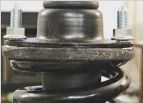-
Join 4Runners.com, Our New Toyota 4Runner Forum!
 4Runner Onboard Air
4Runner Onboard Air
 LED Interior Conversion
LED Interior Conversion
 Replacing the Front CV Axle
Replacing the Front CV Axle
 2010+ 4Runner Bumpers & Armor
2010+ 4Runner Bumpers & Armor
 2017 4Runner TRD Pro Cement
2017 4Runner TRD Pro Cement
 Pelfreybilt 4Runner Armor
Pelfreybilt 4Runner Armor
 FS: Front Wheel Bearing Assemblies
FS: Front Wheel Bearing Assemblies
 4Runners.com Decals Now Available!
4Runners.com Decals Now Available!
 How To: Replace Your 4Runner's Spark Plugs
How To: Replace Your 4Runner's Spark Plugs
 Always-On 4Runner Power Outlets
Always-On 4Runner Power Outlets
-
Welcome to Tacoma World!
You are currently viewing as a guest! To get full-access, you need to register for a FREE account.
As a registered member, you’ll be able to:- Participate in all Tacoma discussion topics
- Communicate privately with other Tacoma owners from around the world
- Post your own photos in our Members Gallery
- Access all special features of the site
3rd Gen T4R "Pink Milkshake" - How worried should you be? 200k Radiator Teardown
Discussion in '4Runners' started by Cattywampus, Oct 26, 2021.


 Old Man Emu/OME spring choice questions, progressing from stock to armored
Old Man Emu/OME spring choice questions, progressing from stock to armored Anyone have a Thule Canyon XT?
Anyone have a Thule Canyon XT? Trade Toyota Tacoma Sport Runner for Toyota 4 Runner
Trade Toyota Tacoma Sport Runner for Toyota 4 Runner The search is over
The search is over







































































